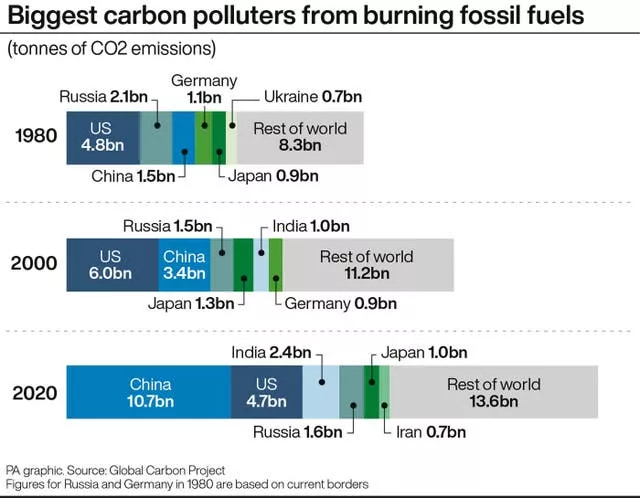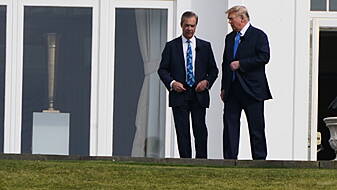The latest climate report from the United Nations (UN) sets out the action needed to tackle the global warming crisis.
Here are answers to some key questions about the report - and what you need to know about its findings.
What is the report?
It is the third part of a global assessment of climate science by the Intergovernmental Panel on Climate Change (IPCC), the sixth such assessment the UN body has conducted, with the most recent one back in 2013/14.
This third report looks at “mitigation” or the action needed to curb global warming by cutting greenhouse gas emissions.
The first part, labelled a “code red for humanity” when it was published last August, examined the physical basis of climate change, while the second report in February this year spelled out the impacts of rising temperatures and the options for – and limits to – adapting to them.
What is the IPCC?
It is the UN body for assessing the science related to climate change. It was established in 1988 to provide political leaders with scientific assessments on climate change, to help them make policy. Some 195 countries are members of the IPCC.
The evidence is clear: the time for action is now. We can halve emissions by 2030.
The #IPCC has just released its latest #ClimateReport on the mitigation of #climatechange.
Press Release ➡️ https://t.co/N9cLJFBbnA
Read the report ➡️ https://t.co/mIdBKgvokW pic.twitter.com/JbvFYy72qf— IPCC (@IPCC_CH) April 4, 2022
There always seems to be another climate report coming out. What is different about this one?
The IPCC reports are an assessment of all the available science on climate change.
This latest study references more than 18,000 studies and sources, and has involved hundreds of authors from around the world, who have received tens of thousands of comments on earlier drafts from scientists and governments.
Most importantly, the 63-page summary of the report has been subject to a line-by-line approval process involving scientists and representatives of the 195 governments before publication – which has taken place online over the last two weeks.
It significantly overran its scheduled Friday finishing time, wrapping up the approval process late on Sunday evening, but it does mean that governments have signed off on the findings.
What does the report say?
It warns that without deep and immediate cuts to greenhouse gas emissions in all sectors, it will be impossible to limit global warming to 1.5C, beyond which the most catastrophic impacts of climate change will be felt.
That means substantial reduction in the use of fossil fuels, a switch to clean energy such as increasingly cheap renewables, technology to capture carbon and scaling up everything from electric cars to energy efficiency in buildings.
It also highlights ways to encourage people to make greener choices, such as plant-based diets or choosing to walk and cycle, and warns that measures to take carbon from the atmosphere, including tree planting and new technology, will also be needed.

What impact will it have?
The first part of the assessment came out in the run-up to the Cop26 climate summit in Glasgow, which aimed – and just about managed – to keep limiting global warming to 1.5C within reach.
The second part of the report landed just days after the world was plunged into a geopolitical crisis with Russia’s invasion of Ukraine.
The war, which worsened already soaring energy prices as western nations scrambled to shift away from Russian oil and gas, has put security of supplies and fuel costs at the top of the agenda for many countries including Ireland.
Those backing climate action have seized on the report’s findings on the need for deep cuts in fossil fuel use, saying it is another reason to wean countries off oil and gas, alongside energy security and curbing Russian aggression.
But with fossil fuel companies putting pressure on governments to increase exploration and production, and with consumers facing a cost-of-living crisis, there is a danger – once again – that decisive climate action falls victim to more immediate concerns for politicians.







